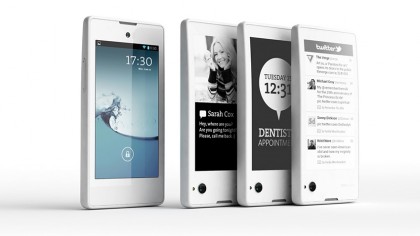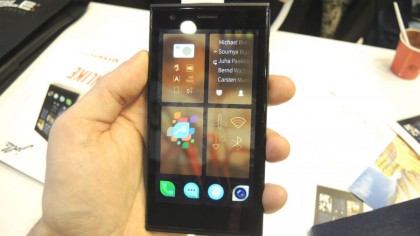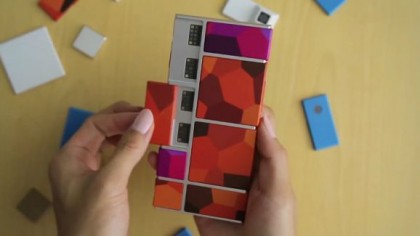Unknown but unstoppable: the next-gen smartphone brands you can't ignore
The weird and the wonderful
"The form factor basically hasn't changed. Instead, the industry has been in a specs race, focusing on bigger screens, better cameras and faster CPUs.

When Yota Devices first introduced the YotaPhone concept, no one had heard of company nor were they embracing the concept of a dual screen, always-on smartphone. Today, YotaPhone is the benchmark by which all similar products are compared.
YotaPhone has also demonstrated that the future of smartphones and mobile devices belongs to always-on displays, which allow users to stay connected without turning off the real world and disrupting the people around you.
Information hidden behind a black screen is of limited use to us. It creates bad habits - like phubbing, the act of snubbing the people around you for your smartphone. And, technology already exists - namely battery saving electronic paper display - that allows you access to information without sapping your phone's battery.
The company has recently announced the next generation of the handset too, complete with a more stylish design and high end specs, so that it's better able to compete with conventional smartphones. The YotaPhone 2 will be launching towards the end of the year.
Jolla
Jolla isn't just rethinking hardware, it's also making big changes to the software we use on it. The company's Sailfish OS is the result of that. It's open source, has a button free and gesture based interface and supports Android apps.
In the words of Juhani Lassila, Head of Communications at Jolla: "With Jolla and Sailfish OS it's all about the user experience." In practice that seems to mean a focus on multitasking and the aforementioned gesture based UI.
Sign up for breaking news, reviews, opinion, top tech deals, and more.
The one and only Sailfish phone currently available, the Jolla, is a bit different too, with swappable smart covers which change not just the look of the hardware but can also change the software theme, with new colours, wallpapers and sound effects.
It's available to order now from Jolla's site for €399 (about £327, US$555, AU$593).

Launching a whole new OS is a brave move and convincing users to ditch the tried and true experiences of Android and iOS could be a tough job. But on the other hand it injects a burst of fresh energy into an environment which hasn't changed much in the last few years.
Plus in supporting Android apps it makes the transition for users as painless as possible. Though unsurprisingly there's no access to Google Play, so you'll have to rely on third party app stores.
Jolla believes that usability is key, as Lassila told us that "the heart of Jolla and Sailfish OS is in the user experience, not in the specs. We aim to provide a better, faster, effortless UX. The specs will never be our most important competing factor."
It's an ideology that makes sense. As with most of the world so focused on specs the best way to stand out is surely to take a different approach. Which in this case primarily means an intuitive and fully gesture based interface.
Project Ara
Google itself deserves a mention here as while it's a massive corporation which is already a big part of the smartphone landscape, it's also looking at ways to fundamentally change that environment.
With Project Ara, Google is exploring modular smartphones, where a base handset could cost as little as $50 (about £29, AU$53) and individual components, such as the camera or processor, could be swapped out and upgraded as needed.
So rather than buying a whole new phone every one to two years you could stick with the same one indefinitely and just change the individual parts.

Not only could that work out cheaper for users but it empowers them to create exactly the phone they want. And while its modular nature means that it will inevitably be bigger and blockier than standard smartphones, the size and weight penalty is now at under 25%, so it needn't look like a brick.
James is a freelance phones, tablets and wearables writer and sub-editor at TechRadar. He has a love for everything ‘smart’, from watches to lights, and can often be found arguing with AI assistants or drowning in the latest apps. James also contributes to 3G.co.uk, 4G.co.uk and 5G.co.uk and has written for T3, Digital Camera World, Clarity Media and others, with work on the web, in print and on TV.